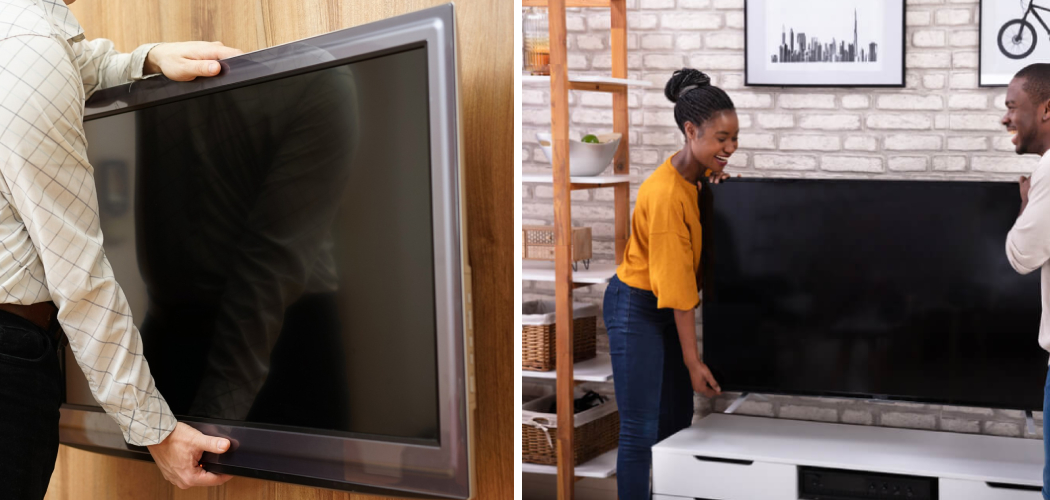Are you tired of tripping over your bulky TV every day? Or maybe you need more space in your home, but don’t want to give up the convenience of having a television set available at any time. If so, investing in storage for your TV is an excellent choice!
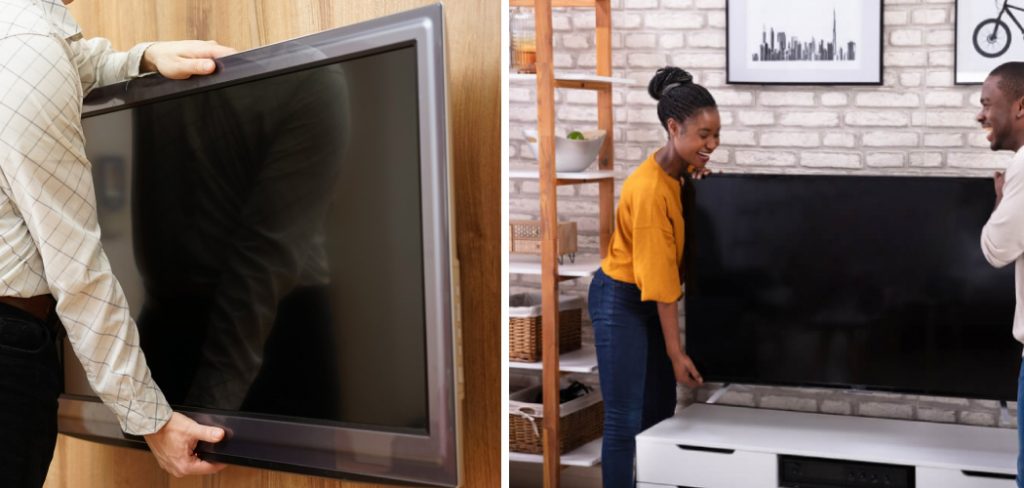
With digital operating becoming ever more popular, storing an unused television set off-site can be a great way to reduce clutter and reclaim valuable house or apartment space without sacrificing entertainment options.
In this blog post, we’ll discuss some tips on how to store a tv in a storage unit safely and securely. Storage solutions are now simpler than ever before – let’s get started!
Can You Lay a TV Flat in Storage?
The answer to this question is no. It’s not recommended that you place a television flat on its back in a storage unit for an extended period of time. This can cause permanent damage to the internal components, such as the capacitors and other electrical parts. Also, if your TV is placed too close to another object, it may create a hazard.
The best way to store your television in a storage unit is by using the original packaging or purchasing some form of specialized TV storage container with appropriate padding and ventilation. If you don’t have access to these materials, you can use cardboard boxes or plastic bins that are large enough for the TV and its cords.
Additionally, make sure you prop up the TV at an angle on one side so as to avoid potential water damage from any condensation buildup inside the box. This will also allow air circulation which helps prevent overheating and possible internal damage caused by excessive heat. Finally, label your container with contact information so that if there is ever an emergency, someone can reach out to you about accessing your stored items.
Can You Store TV in a Cold Storage Unit?
The short answer is no. Storing a TV in a cold storage unit is not recommended as it can damage the circuitry and other components of the device. It’s also important to note that while some TVs may be designed for outdoor use, they are still susceptible to temperature swings and should not be stored in an environment where temperatures fluctuate greatly.
Additionally, TVs will need access to power while in storage, so it’s not really feasible or practical to store them in a cold storage unit.
To ensure your television stays safe and undamaged during storage, you’ll want to find a climate-controlled storage facility with consistent temperatures. This will help protect the integrity of the device by preventing any sudden changes in temperature which could damage its components.
Additionally, you’ll want to take extra precautions, such as using a protective cover or bubble wrap around the set while in storage and unplugging all cords before placing it into the unit.
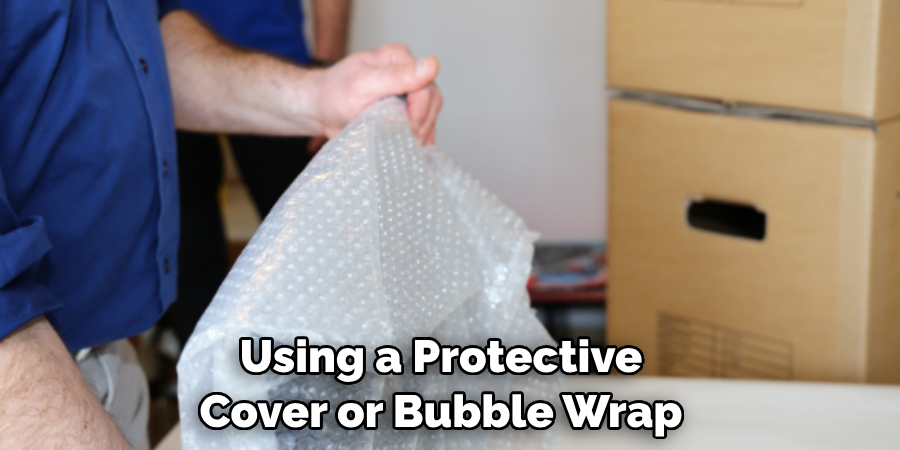
Overall, when it comes to storing a TV in a cold storage unit, it is not recommended due to the potential for damage from temperature fluctuations.
To ensure your television stays safe during storage, you should opt for a climate-controlled facility with consistent temperatures and consider taking extra precautions like using a protective cover or wrapping it in bubble wrap. With these considerations taken into account, you can rest assured that your TV will stay safe and intact until you’re ready to use it again.
10 Methods How to Store a TV in a Storage Unit
1. Choose the Right Size Unit
When choosing a storage unit for your TV, it is important to choose the right size unit. If you have a large TV, you will need a larger unit. Conversely, if you have a small TV, you can choose a smaller unit.
Make sure the unit is big enough to fit your TV and any other items you plan on storing inside. Additionally, you may want to consider a climate-controlled unit if your TV is particularly sensitive to temperature and humidity changes.
2. Wrap the TV in Bubble Wrap
Once you have chosen the right size storage unit, you will need to wrap your TV in bubble wrap. This will protect your TV from scratches and other damage that could occur during transport or while in storage.
Place the bubble wrap around your TV and secure it with packing tape. Make sure that the bubble wrap is snug but not too tight so that your TV has some room to breathe. Once your TV is wrapped, you can move it to the storage unit.
3. Place the TV in a Box
After wrapping your TV in bubble wrap, you will need to place it in a box. This will further protect your TV from damage and also make it easier to transport. Use a sturdy, large box with plenty of packing materials to fill any extra space and cushion the TV. Make sure the box is not bigger than necessary or it may shift during transport.
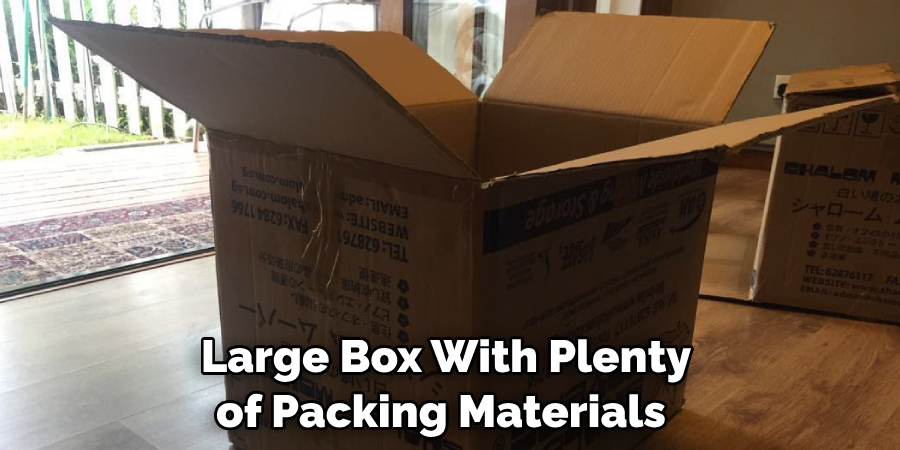
However, be sure to leave enough space that you can add more packing materials if needed. Secure the box with tape and label it fragile. Make sure the box is labeled correctly, and that it includes your name, contact information, and storage unit number.
4. Transport the TV Carefully
When transporting your TV to the storage unit, it is important to do so carefully. You should avoid bumps and jostling as much as possible to prevent damage to your TV. Always use a moving cart or dolly to safely move the TV, and secure it using straps.
Securely wrap your TV in protective padding, such as bubble wrap, for additional protection. Make sure to secure the TV in an upright position when transporting it. This will ensure that any liquids inside the TV will not leak out and cause damage.
5. Store the TV Upright
Once you have transported your TV to the storage unit, you should store it upright. This will help to prevent any damage that could occur if your TV were to tip over while in storage. It is important to make sure that the TV is well-secured and held in place while in storage.
You may want to use a specially designed stand or a pallet to help support and stabilize the TV. It is also important that you make sure the TV is not directly touching any walls or other items in the storage unit, as this could cause damage.
6. Use Packing Peanuts for Extra Protection
If you want extra protection for your TV while in storage, you can use packing peanuts. Packing peanuts can be placed around your TV in the box to help keep it safe from scratches and other damage.
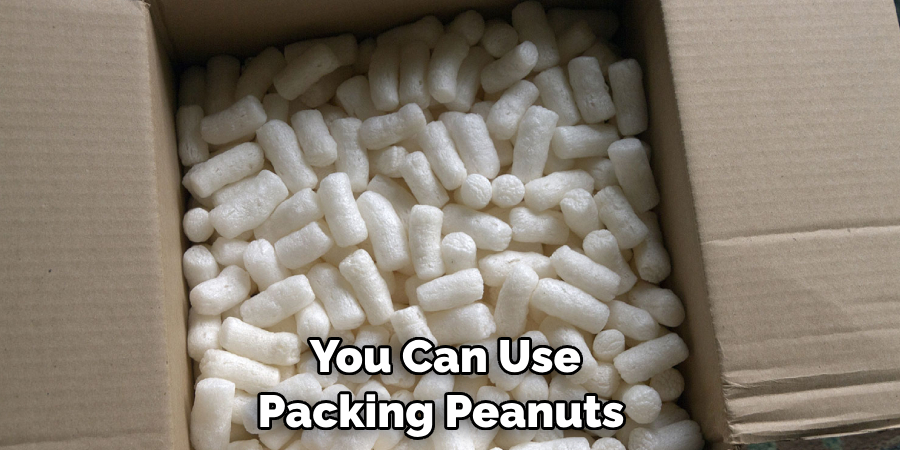
Be sure to check with your storage unit facility for any restrictions before using packing peanuts. Additionally, you may want to use a plastic bag to wrap the TV in before adding the packing peanuts and placing it in the box to keep any loose peanuts from getting inside your TV.
7. Cover the TV with a Blanket
Another way to help protect your TV while in storage is to cover it with a blanket. This will help to keep dust and other debris off of your TV and also help to prevent scratches. Be sure to use a breathable fabric, such as cotton or muslin that will still allow air to circulate.
Secure the blanket in place with packing tape. If you choose to use a tarp, make sure you secure it tightly so it won’t blow away in the wind.
8. Store the TV Away from Direct Sunlight
When storing your TV in a storage unit, it is important to store it away from direct sunlight. Sunlight can cause damage to electronic components over time, so it is best to avoid storing your TV in an area where it will be exposed to direct sunlight.
If you need to store it in a unit that has windows, cover the TV with a tarp or blanket to protect it from the light. Make sure that your unit is well-ventilated, as this will prevent the buildup of heat and humidity that can cause further damage to the TV. Additionally
9. Unplug All Cords
Before placing your TV into the storage unit, you should unplug all cords and cables. This will help to prevent any damage to them while in storage. It also reduces the risk of fire or electric shock.
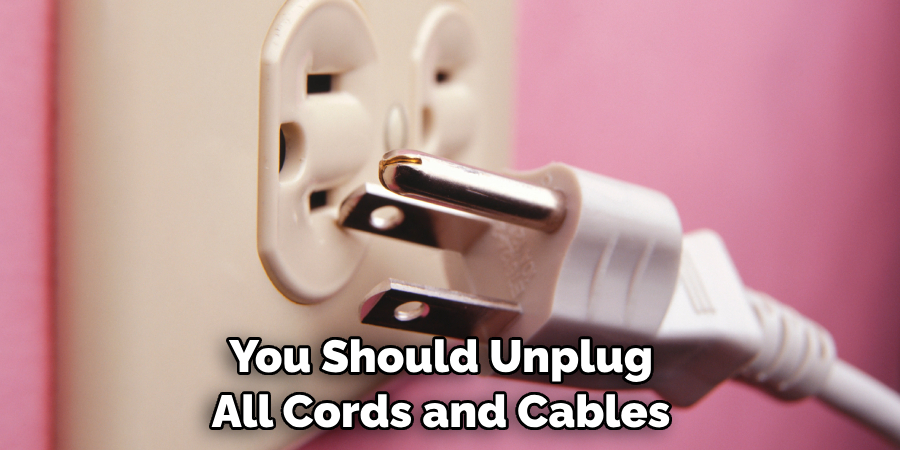
Make sure that you keep track of which cords and cables belong to your TV, so that you can easily reconnect them when the time comes. Also, consider taking a picture of where each cord goes before unplugging them for easy reference.
10. Use a Climate-Controlled Storage Unit
When storing your TV in a storage unit, it is important to use a climate-controlled storage unit. Climate-controlled storage units keep the temperature and humidity levels inside your storage unit at a constant level, which can help protect your TV from damage due to extreme temperatures or humidity levels. This type of storage unit costs more than a regular storage unit, but it can help ensure that your TV is properly protected.
Things to Consider When Storing a TV in the Storage Unit
1. Make Sure Your TV is Completely Dry:
TVs can be damaged if moisture gets inside, so make sure that your TV has been dried off completely before storing it. This includes any external cables, as well.
2. Prepare the Storage Unit:
Before putting your TV in the storage unit, check to make sure you’ve prepared it correctly. Make sure the climate of the storage unit is stable and free from dampness, dust or dirt that could harm your TV.
3. Use the Proper Packaging:
When packing the TV for storage, make sure it is securely wrapped and sealed with plastic coverings or bubble wrap so that no external dirt particles can get inside the electronics. If you’re using a box to store your TV in, use one that is big enough so that the TV won’t move around inside.
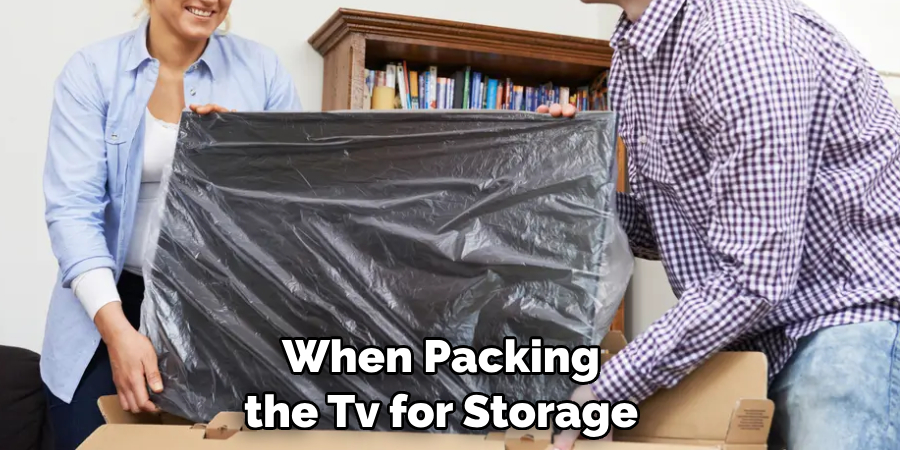
Conclusion
For persons looking to store a television in their storage unit for an extended period of time, it’s important to make sure all the necessary steps are taken to ensure the longevity of the item. Make sure that you wrap it with tarps or other protective materials and take extra care when loading and unloading it.
Additionally, ensure that your storage unit is temperature regulated, as both cold temperatures and high humidity can damage electronics over time. Taking all of these measures ensures that your television remains safe wherever you place it, whether there be in a home or even in a storage unit.
Ultimately, following these steps can guarantee that your television will be kept safe for however long you need it stored away. Therefore, if you want to learn how to store a TV in a storage unit, then remember to wrap your TV properly and store it where temperatures are controlled.
